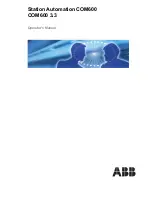
55
®
Hotkey sequences and Port Direct
Wizard IP allows you to enter commands suitable for any KVM switch in order to
choose from up to 128 host systems. These switching commands can take the
form of hotkey sequences that emulate standard keypress combinations or, for
KVM switches that support the Port Direct format, merely basic port numbers.
Hotkey sequences
Almost any combination of keypresses can be emulated using the following
notations:
+
means press down the key that follows;
–
means release the key that follows
+–
means press and then release the key that follows
*
means add a delay. The standard delay period is 250ms, however, if a
number immediately follows the asterisk, this will define an alternate delay
period (in milliseconds)
A list of permissible keypresses and information about how to abbreviate them
are given in
Notes
•
The entries are not case sensitive.
• It is not necessary to specify all keys to be released at the end because they
are all released automatically after the last code.
• A number of KVM switches from alternative manufacturers use hot key
sequences that begin with a press/release of either the Scroll Lock or Ctrl
keys. These often require a delay between the initial key press and the
channel number to allow the switch to respond. A 500ms delay is usually
sufficient.
Examples
To send the command
Ctrl + Alt 4
you should use the following:
+Ctrl+Alt+4
.
To send the command
Ctrl + Alt 12
you should use the following:
+Ctrl+ALT+–
1+2
(the ‘+–1’ entry causes the 1 key to be pressed and released before the 2 key is
pressed).
To send the command
Scroll lock 1 + Enter
(with a 500ms delay) you should use
the following:
+–Scr*500+1+Ent
Port Direct
Port Direct is totally transparent communication system that allows supporting
KVM switches and remote access devices to communicate with each other.
Using the keyboard connections that link each device, Port Direct allows:
• A controlling device to provide address details of the required port, the user’s
name and access rights, mouse calibration and video mode information.
• A controlled device to confirm the address and other details of the current
port.
Such communication simplifies both the configuration and selection of systems,
especially within a complex cascade structure. Port Direct also allows the Wizard
IP
Hosts
option to directly control the connected KVM switches and then apply
the appropriate video capture and mouse scaling settings. Port Direct provides
excellent security control to prevent users from accessing systems for which they
do not access rights (‘sideways movement’) because each unit is fully informed
of each user’s precise access rights.
Port/host addressing using Port Direct
When adding new computers to the Hosts list, the option ‘
Add entry for
unrecognised host’
is provided to automatically add new entries if a port is
visited that does not already have a matching host entry. This is a useful option
for simple KVM switch configurations, but should be used with care when
complex cascades of switches are being used as it may lead to more host entries
being added than are strictly necessary.
Additionally, you can specify the port number of the required system using the
same format as if controlling the KVM switch directly. Port numbers MUST be
entered within square brackets and can be specified to a maximum of four
cascaded levels.
Examples
[16]
selects port 16 and is equivalent to the hotkey sequence
+CTRL+ALT+–
1+6
[4105]
selects port 5 on a KVM switch that is cascaded through port group
41 (see your KVM switch manual for more details on cascade port
numbering).
















































